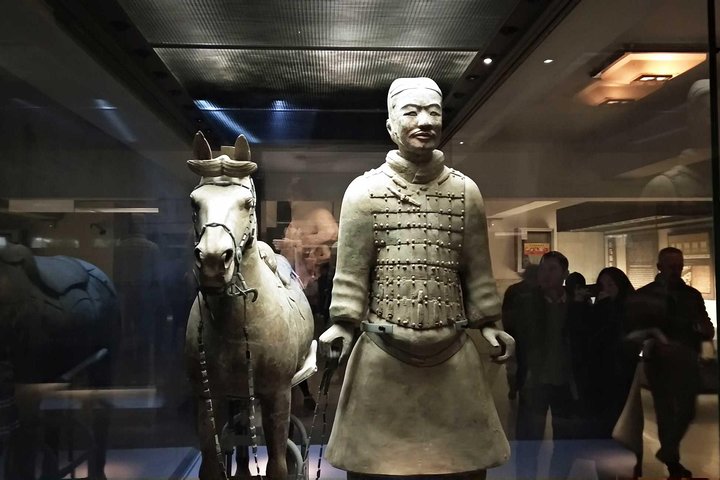Exploring the Silk Road: A Journey Through Xi’an, Dunhuang, and Beyond
Embark on a captivating journey through the ancient Silk Road, exploring the historical wonders of Xi’an, the mystical landscapes of Dunhuang, and the cultural tapestry of Turpan and Urumqi. Discover the rich history and vibrant cultures that have shaped this legendary trade route.
A Journey Through Time: Xi’an and the Terracotta Warriors
As I embarked on the 12-day Silk Road tour from Xi’an, I was immediately captivated by the rich tapestry of history that unfolded before me. Xi’an, the ancient capital of China, is a city that breathes history. Upon arrival, I was greeted by the imposing City Wall, a testament to the city’s ancient military prowess. Walking along its ramparts, I felt a connection to the past, imagining the soldiers who once stood guard over this historic city.
The highlight of my time in Xi’an was undoubtedly the visit to the Museum of Qin Terra-cotta Warriors and Horses. The sheer scale and detail of the terracotta army left me in awe. Each warrior, with its unique facial expression and posture, seemed to tell a story of its own. It was a humbling experience to stand before these silent sentinels, guardians of an emperor’s tomb for over two millennia. The museum’s exhibits, including the Bronze Chariots and Horses, provided a deeper understanding of the artistry and craftsmanship of ancient China.
Exploring the Muslim Quarter was a sensory delight. The vibrant bazaar, with its array of spices, textiles, and street food, offered a glimpse into the cultural melting pot that Xi’an has been for centuries. The aroma of freshly baked bread and sizzling kebabs filled the air, and I couldn’t resist sampling the local delicacies. The Great Mosque, with its unique blend of Chinese and Islamic architecture, was a serene oasis amidst the bustling market.
The Mystical Landscapes of Dunhuang
Leaving Xi’an, I journeyed to Dunhuang, a city that seemed to rise from the sands of the Gobi Desert. The Crescent Moon Pool, a natural wonder nestled between towering sand dunes, was a sight to behold. The crystal-clear waters of the pool, shaped like a crescent moon, have defied the desert’s encroachment for centuries. Sliding down the Sounding Sand Dunes, I was enchanted by the musical notes that seemed to emanate from the shifting sands.
The Mogao Caves, a UNESCO World Heritage site, were a highlight of my visit to Dunhuang. These ancient grottoes, adorned with intricate murals and sculptures, are a testament to the spiritual and artistic endeavors of the Silk Road travelers. As I wandered through the dimly lit caves, I marveled at the vivid depictions of Buddhist tales and the skill of the artisans who created them. It was a profound reminder of the cultural exchanges that have shaped this region over the centuries.
In the evening, I found solace in the tranquil beauty of the desert. Watching the sun set over the dunes, painting the sky in hues of orange and pink, was a moment of pure serenity. The vastness of the desert, with its endless horizons, offered a sense of freedom and introspection that is rare in the modern world.
Cultural Encounters in Turpan and Urumqi
Continuing my journey, I arrived in Turpan, a city renowned for its ancient ruins and unique irrigation system. The Ancient City of Gaochang, with its crumbling walls and silent streets, was a poignant reminder of the city’s former glory. As I explored the ruins, I imagined the bustling life that once filled these streets, a vibrant hub of trade and culture along the Silk Road.
The Karez System, an ingenious network of underground channels, was a marvel of ancient engineering. This system, which has sustained the region’s agriculture for centuries, is a testament to the ingenuity and resilience of the people who call this arid land home. Visiting a local Uighur family, I was welcomed with warmth and hospitality, sharing a meal that was as rich in flavor as it was in tradition.
In Urumqi, the capital of Xinjiang, I was struck by the city’s blend of modernity and tradition. The bustling markets, with their colorful displays of fruits, nuts, and spices, were a feast for the senses. The Tianshan Tianchi Lake, a pristine alpine lake surrounded by snow-capped peaks, offered a peaceful retreat from the city’s hustle and bustle. Here, I had the opportunity to interact with the Kazak people, gaining insight into their nomadic lifestyle and rich cultural heritage.
As my journey along the Silk Road came to an end, I reflected on the myriad experiences and encounters that had enriched my understanding of this ancient trade route. From the historical wonders of Xi’an to the mystical landscapes of Dunhuang and the cultural tapestry of Turpan and Urumqi, this journey was a profound exploration of the Silk Road’s enduring legacy.







































